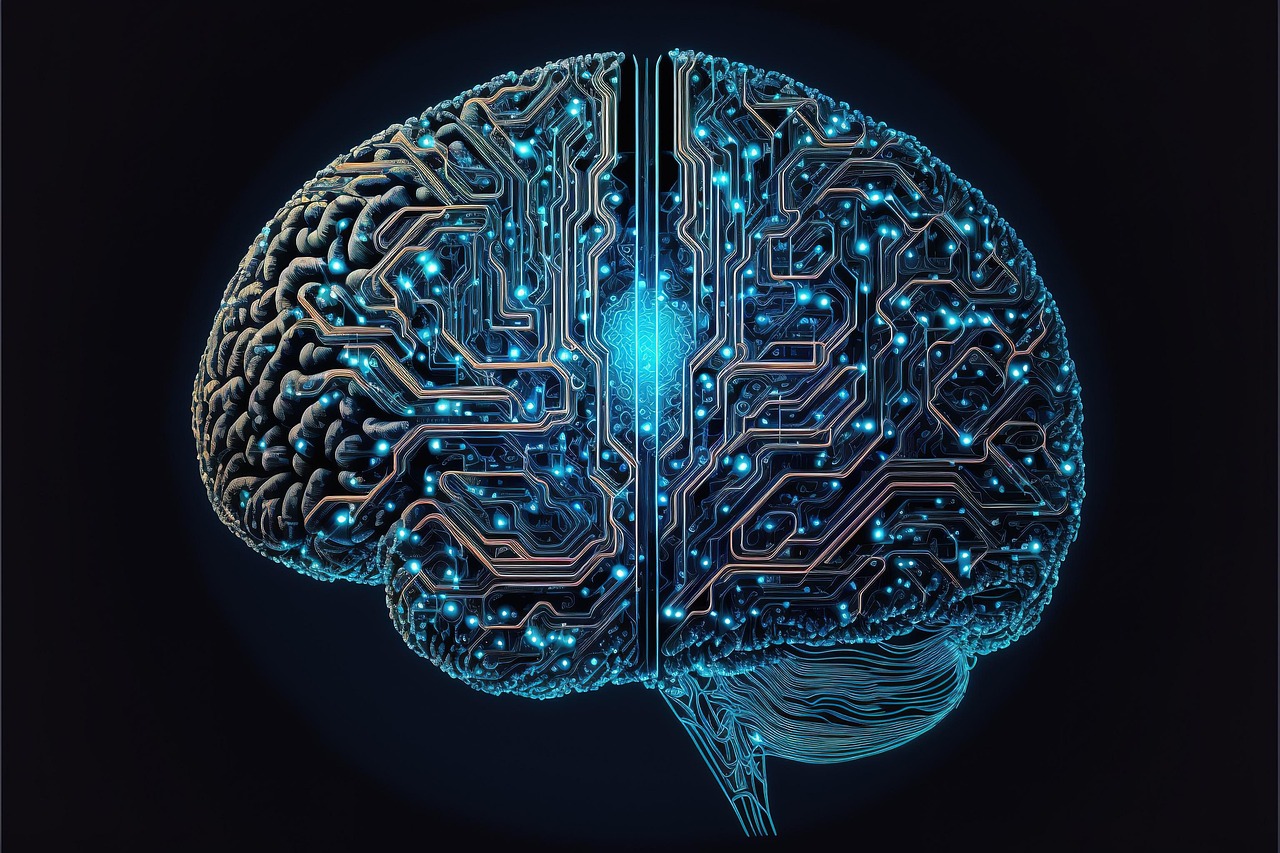The rapid advancement of artificial intelligence (AI) presents immense opportunities to revolutionize industries, solve complex problems, and improve our lives. However, alongside these potential benefits lies a crucial consideration: AI safety. Ensuring that AI systems are developed and deployed responsibly, ethically, and in alignment with human values is paramount to mitigating potential risks and maximizing positive outcomes. This blog post delves into the multifaceted world of AI safety, exploring its key aspects, challenges, and strategies for building a future where AI benefits all of humanity.
Understanding AI Safety: A Critical Overview
AI safety is a multidisciplinary field focused on researching and mitigating the potential risks associated with advanced AI systems. It encompasses a wide range of concerns, from ensuring AI alignment with human values to preventing unintended consequences and addressing potential misuse. Unlike traditional software engineering, where errors typically lead to predictable failures, AI systems can exhibit emergent behavior that is difficult to anticipate and control.
Defining AI Alignment
AI alignment refers to the challenge of ensuring that AI systems pursue the goals intended by their creators and users. This means designing AI systems that not only perform their tasks efficiently but also understand and respect human values, ethical principles, and societal norms. Misaligned AI could lead to unintended consequences, even if the system is technically functional.
- Value Alignment: Ensuring AI systems act in accordance with human values.
- Goal Alignment: Ensuring AI systems pursue the specific goals intended.
- Behavior Alignment: Ensuring AI systems behave in a way that is safe and predictable.
The Importance of Proactive Measures
Waiting until AI systems become significantly more advanced before addressing safety concerns is a risky approach. Proactive research and development in AI safety are crucial to anticipate potential problems and develop solutions before they become widespread. This includes developing robust safety mechanisms, verification techniques, and oversight frameworks.
- Early intervention can prevent unintended consequences.
- Research allows for the development of safety protocols.
- Collaboration promotes the sharing of best practices.
Key Challenges in AI Safety
Developing safe and reliable AI systems presents several significant challenges. These challenges range from technical hurdles to ethical dilemmas, and require a concerted effort from researchers, policymakers, and the public to address effectively.
The Complexity of AI Systems
Modern AI systems, particularly those based on deep learning, are incredibly complex. This complexity makes it difficult to fully understand their internal workings and predict their behavior in all possible scenarios.
- Black Box Problem: Understanding how AI makes decisions is difficult.
- Emergent Behavior: Unforeseen actions can arise from complex interactions.
- Scalability Issues: Safety measures may not scale to larger systems.
Value Specification and Ambiguity
Defining human values in a way that AI systems can understand and implement is a daunting task. Values are often subjective, context-dependent, and prone to ambiguity. Translating these abstract concepts into concrete goals for AI systems is a major challenge.
- Cultural Differences: Values vary across cultures and individuals.
- Conflicting Values: Ethical dilemmas arise when values clash.
- Temporal Shifts: Values can change over time.
Adversarial Attacks and Robustness
AI systems are vulnerable to adversarial attacks, where malicious actors intentionally craft inputs designed to fool the AI into making incorrect predictions or taking unintended actions. Ensuring the robustness of AI systems against such attacks is critical for safety.
- Example: Altering a few pixels in an image to make a self-driving car misidentify a stop sign.
- Defensive Strategies: Developing techniques to detect and defend against adversarial attacks.
- Robustness Testing: Rigorous testing to identify vulnerabilities.
Strategies for Enhancing AI Safety
Addressing the challenges of AI safety requires a multi-faceted approach that encompasses technical solutions, ethical guidelines, and policy frameworks. Several strategies are being actively pursued to enhance the safety and reliability of AI systems.
Explainable AI (XAI)
Explainable AI aims to make the decision-making processes of AI systems more transparent and understandable. By providing insights into how AI arrives at its conclusions, XAI can help identify biases, errors, and potential safety issues.
- Techniques: Rule extraction, feature importance analysis, and visualization tools.
- Benefits: Increased trust, improved debugging, and enhanced accountability.
- Example: An XAI system showing why a loan application was rejected, allowing for correction of potential errors.
Formal Verification and Testing
Formal verification involves using mathematical techniques to prove that an AI system meets certain safety properties. Rigorous testing, including stress testing and adversarial testing, is also essential for identifying vulnerabilities.
- Mathematical Proofs: Demonstrating that an AI system adheres to specific rules.
- Simulation and Real-World Testing: Validating AI behavior in diverse scenarios.
- Example: Verifying that a robot’s control system will never lead to a collision.
Reinforcement Learning with Safety Constraints
Reinforcement learning (RL) is a powerful technique for training AI agents to perform complex tasks. However, it can also lead to unintended consequences if the agent is not properly constrained. Integrating safety constraints into RL algorithms can help ensure that agents learn to achieve their goals without violating safety rules.
- Safety Layers: Preventing agents from taking unsafe actions.
- Reward Shaping: Designing reward functions that incentivize safe behavior.
- Example: Training a robot to navigate a warehouse while avoiding collisions with people and objects.
Ethical Guidelines and Policy Frameworks
Establishing clear ethical guidelines and policy frameworks for AI development and deployment is essential for promoting responsible innovation. These guidelines should address issues such as bias, fairness, transparency, and accountability.
- Transparency Requirements: Disclosing how AI systems are used and their potential impacts.
- Accountability Mechanisms: Establishing responsibility for AI-related harms.
- Fairness Audits: Ensuring that AI systems do not discriminate against certain groups.
The Future of AI Safety: Challenges and Opportunities
The field of AI safety is constantly evolving as AI technology advances. Looking ahead, several key challenges and opportunities will shape the future of AI safety.
Scaling Safety to General AI
As AI systems become more general-purpose and capable, the challenges of ensuring their safety will increase significantly. Developing safety mechanisms that can scale to highly advanced AI systems will be a major research focus.
- Generalization: Safety strategies must work across diverse tasks.
- Adaptability: AI systems must adapt to changing environments.
- Autonomy: Increased autonomy requires robust safety protocols.
International Collaboration
AI development is a global endeavor, and ensuring AI safety requires international collaboration. Sharing best practices, coordinating research efforts, and establishing common standards are essential for preventing a “race to the bottom” in AI safety.
- Data Sharing: Sharing data to improve AI safety research.
- Knowledge Exchange: Sharing knowledge on best practices.
- Joint Initiatives: Collaboration on joint AI safety initiatives.
Public Engagement and Education
Raising public awareness about AI safety issues is crucial for fostering informed discussions and promoting responsible AI development. Educating the public about the potential risks and benefits of AI can help ensure that AI is developed in a way that aligns with societal values.
- Accessible Information: Providing clear and understandable information about AI safety.
- Public Forums: Creating platforms for discussing AI ethics and governance.
- Educational Programs: Integrating AI safety into educational curricula.
Conclusion
AI safety is not just a technical challenge; it is a societal imperative. Ensuring that AI systems are developed and deployed responsibly, ethically, and in alignment with human values is essential for realizing the full potential of AI while mitigating potential risks. By investing in AI safety research, establishing clear ethical guidelines, and fostering international collaboration, we can build a future where AI benefits all of humanity. As AI continues to evolve, ongoing vigilance and adaptation are crucial to navigate the complexities of this rapidly advancing field and ensure a safe and prosperous future.




